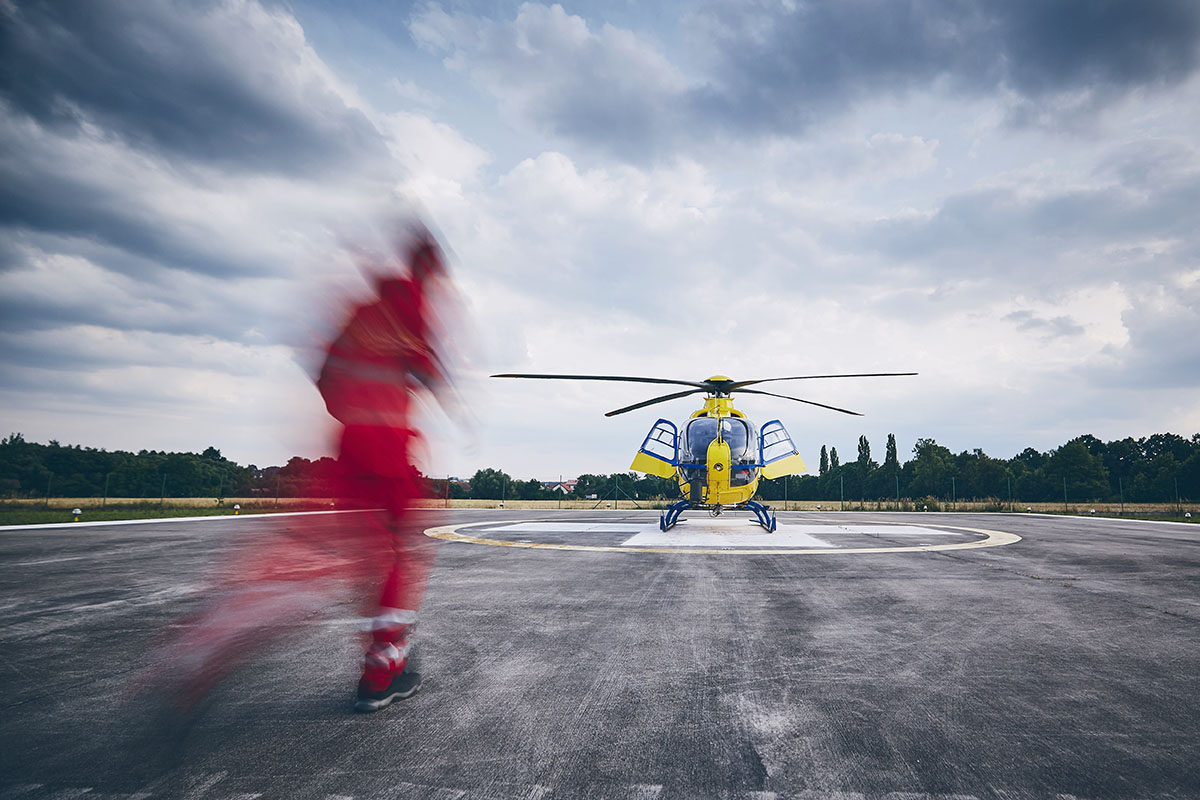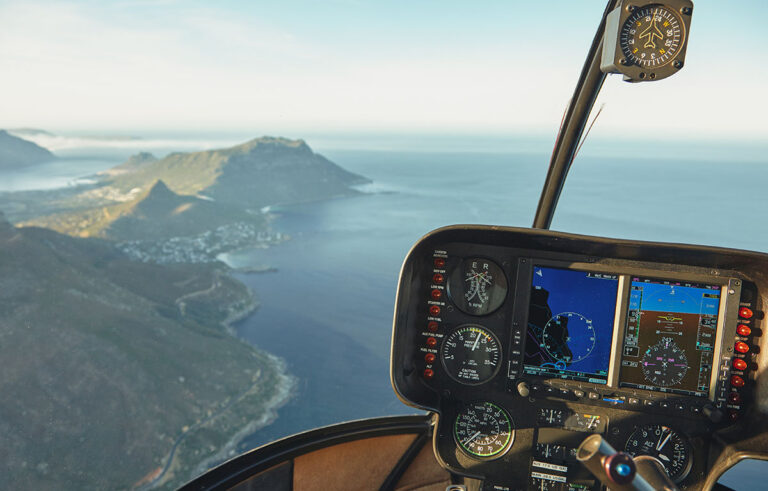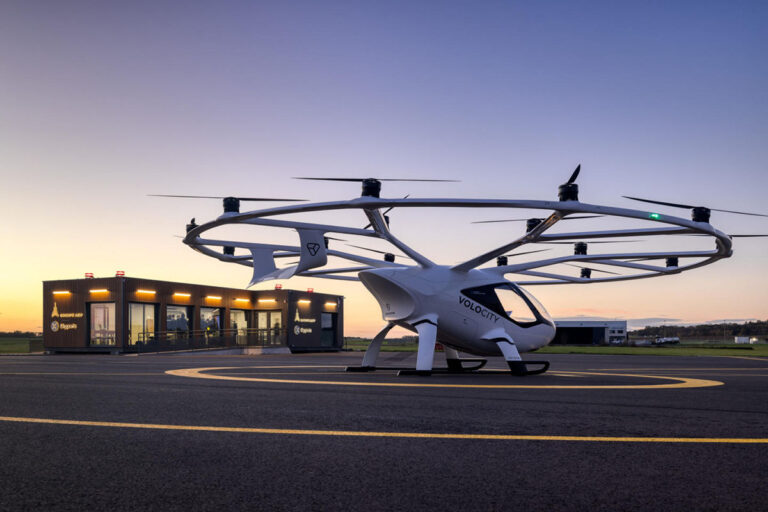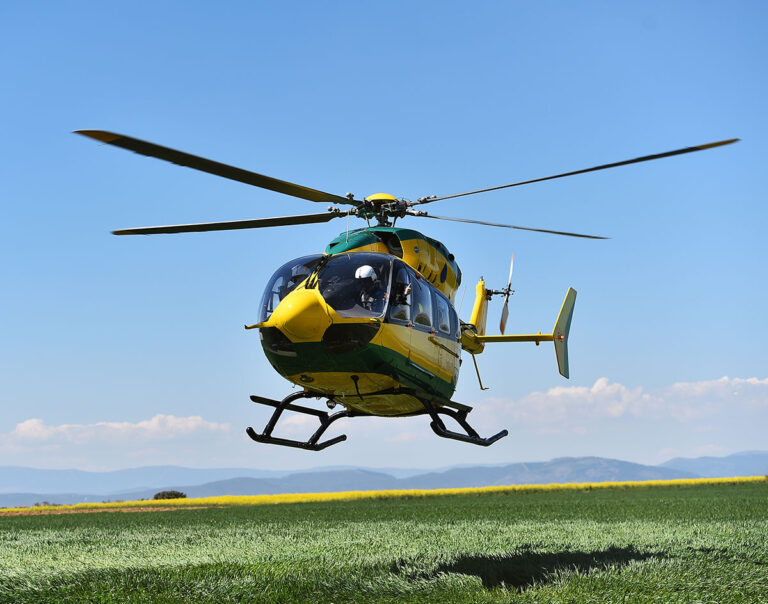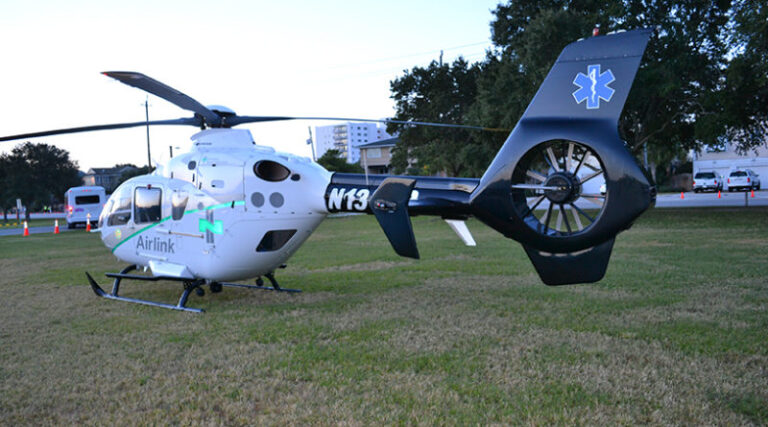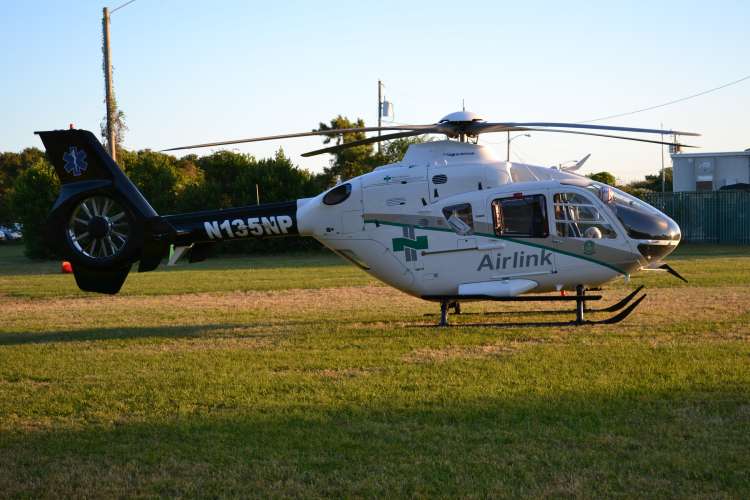Medevac Helicopters: Flying Ambulances in Modern Emergency Response
When time is of the essence and lives hang in the balance, a medevac helicopter springs into action, providing rapid transport and critical medical care to those in dire need. Medevac helicopters, a combination of medical care and evacuation, are an essential component in emergency medical services and have been pivotal in saving countless lives by ensuring timely access to medical facilities.
In this comprehensive article, you will delve deep into the multifaceted world of medevac helicopters. You’ll explore the history and evolution of these life-saving aerial vehicles, understanding how they have modernized over the years to incorporate advanced technology and enhanced safety features.
You will gain insights into the distinct features and specifications that equip medevac helicopters to provide efficient emergency medical services, learning about the cutting-edge medical equipment on board and the operational aspects that enable effective response to emergency situations.
In addition to exploring the role and operations of medevac helicopters, this article will provide an in-depth look at their economic impact, cost-effectiveness, and the various providers and manufacturers in the industry. You’ll also discover the regulatory and ethical considerations surrounding their use, and glimpse into the future of medevac helicopters, where innovations and advancements promise to further elevate their capabilities and accessibility.
Helicopter Rescues Vietnam: True stories of helicopter rescues as told by the men who flew them
On August 6, 2011, a US Army CH-47D Chinook helicopter approached a landing zone in Afghanistan 40 miles southwest of Kabul. The helicopter, call sign Extortion 17, was on a mission to reinforce American and coalition special operations troops. It would never return. Insurgents fired at the Chinook, severed one of its rear rotor blades, and brought it crashing to the ground. All 38 onboard perished instantly in the single greatest moment of sacrifice for Americans in the war in Afghanistan.True stories of daring helicopter rescues as told by the men who flew them. Twenty two missions flown by youthful helicopter crews in service to their country and to their fellow comrades during the Vietnam War.
Moreover, to address your specific queries, we have incorporated a detailed Frequently Asked Questions section, ensuring you leave with a well-rounded understanding of the medevac helicopter realm.
Whether you’re a professional in the field, a curious learner, or someone passionate about aviation and medical services, this article is designed to be your go-to guide, providing concise, clear, and engaging content on medevac helicopters. So, buckle up and get ready to soar into the fascinating journey of medevac helicopters and their invaluable contribution to saving lives.
History and Evolution of Medevac Helicopters
The story of the medevac helicopter, a critical component in emergency medical services, is as riveting as it is transformative. The medevac helicopter, or the air ambulance, has witnessed considerable evolution, impacting countless lives by offering swift medical evacuation in critical times.
Origin and Early Development
The concept of using aircraft for medical evacuation dates to World War I, but it wasn’t until World War II that the first dedicated medevac helicopter, the Sikorsky R-4, made its debut. This early medevac chopper paved the way for the critical role helicopters would play in medical transport services, emphasizing the value of rapid evacuation of the wounded from battlefields to medical facilities.
Korean War and Vietnam War: Proving Ground for Medevac Operations
The Korean War marked a significant advancement in medevac helicopter services. The Bell H-13 Sioux, prominently featured in the television series “MAS*H,” played a crucial role in saving numerous lives by reducing the time it took to transport wounded soldiers to mobile army surgical hospitals. Similarly, the Vietnam War saw extensive use of the Bell UH-1 “Huey” as a medevac helicopter, illustrating the growing importance of air medical transport services in military operations.
Transition to Civilian Emergency Services
Post-war, the invaluable service of medevac helicopters transitioned from military to civilian use, transforming emergency medical services. The helicopter’s ability to access remote and inaccessible areas made it an indispensable asset in rescue operations, natural disasters, and critical care air transport, proving the utility of medevac helicopter operations in varied terrains and situations.
Modern Advancements and Technologies in Medevac Helicopters
Today’s medevac helicopters are marvels of modern technology, equipped with advanced life-support systems, navigation tools, and safety features. These helicopters come furnished with state-of-the-art medical equipment enabling in-flight medical interventions, thus acting as flying intensive care units. Developments in avionics, communication systems, and aircraft design have enhanced the operational efficiency, reliability, and speed of medevac flight services, ensuring quicker and safer transport of patients.
- Life-saving Equipment: Modern medevac helicopters house advanced life support, monitoring devices, and medication, facilitating immediate medical response.
- Navigation Systems: Cutting-edge navigation systems and technologies enable precise and secure flights, even in unfavorable weather conditions.
- Safety Measures: Enhanced safety features ensure the wellbeing of both the patient and the medical crew during transport.
The Evolutionary Journey: A Recapitulation
- World War I: Conceptual inception of air medical evacuation.
- World War II: Introduction of the first dedicated medevac helicopter, Sikorsky R-4.
- Korean War: Significant advancements with the Bell H-13 Sioux serving as a crucial component in medevac operations.
- Vietnam War: Extensive utilization of Bell UH-1 “Huey,” emphasizing the growing role of medevac helicopters.
- Post-War Era: Transition of medevac services to civilian emergency medical services.
- Modern Day: Incorporation of advanced technology enhancing the operational aspects of medical helicopter transport.
The journey of the medevac helicopter illustrates the relentless pursuit of humanity to leverage technology to save lives. From rudimentary beginnings to becoming indispensable in emergency medical services, the medevac helicopter stands testament to the synergy between medicine and aviation, continuously evolving to meet the ever-changing demands of medical evacuation and critical care air transport.
Features and Specifications of Medevac Helicopters
Medevac helicopters are highly specialized aircraft, uniquely designed and equipped to provide life-saving services swiftly and effectively. These air ambulances are integral components of modern emergency medical services, allowing medical professionals to reach and treat patients in remote or inaccessible areas rapidly. Let’s delve into the distinctive features and specifications that characterize medevac helicopters.
Essential Medical Equipment
The core of any medevac helicopter is its advanced medical equipment, transforming the aircraft into a flying intensive care unit. Medevac helicopters are furnished with state-of-the-art medical devices and supplies, enabling the provision of immediate and comprehensive medical care during air medical transport services.
- Life-Support Systems: These systems are crucial for maintaining patients’ vital functions, including ventilation and oxygen supply.
- Monitoring Devices: Continuous monitoring of patients’ vital signs is enabled through advanced monitoring devices.
- Medical Supplies and Medication: A stock of essential medical supplies and drugs allows for immediate medical intervention.
Safety and Navigation Systems
Safety and precise navigation are paramount in medevac helicopter operations, especially when transporting critically ill patients. Modern medevac helicopters are embedded with cutting-edge navigation and communication systems, ensuring secure and accurate flights.
- Avionics: Advanced avionics aids in navigation and communication, allowing for safe operations even in unfavorable conditions.
- Weather Radar: Modern weather radar systems help pilots navigate safely around adverse weather phenomena.
- Collision Avoidance Systems: These systems help in detecting and avoiding obstacles, ensuring a safe flight path.
Cabin Design and Patient Comfort
A medevac helicopter’s cabin is meticulously designed to accommodate medical equipment and personnel while ensuring patient comfort during transport. The interior is structured to allow medical staff easy access to the patient and medical equipment, facilitating efficient in-flight medical care.
- Spacious Interiors: Sufficient space is crucial for accommodating medical staff, equipment, and the patient comfortably.
- Easy Access: Design features such as sliding doors allow for quick loading and unloading of patients.
- Isolation Capabilities: Some modern medevac helicopters offer isolation units for transporting infectious patients without risk to the crew.
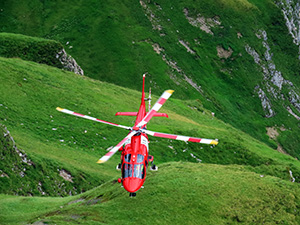
Operational Efficiency and Speed
The efficacy and speed of medevac helicopters are critical for reducing the time between the onset of a medical emergency and the initiation of definitive care. The rapid response and transit times of these helicopters can make a significant difference in medical outcomes.
- Fast Cruising Speeds: Medevac helicopters are capable of high-speed travel, enabling quick access to patients and hospitals.
- Operational Range: A substantial operational range allows medevac helicopters to cover vast areas, ensuring wider service availability.
- Fuel Efficiency: Advanced engineering and design contribute to improved fuel efficiency, allowing extended operation times.
The medevac helicopter is a convergence of medical innovation and aviation technology, created to serve humanity in critical times. Its advanced features and specifications are meticulously integrated to offer swift, safe, and efficient medical evacuation and in-flight care, making it a cornerstone in emergency medical services. Whether it’s reaching inaccessible terrains or navigating through adverse conditions, the medevac helicopter stands as a beacon of hope for those in dire need.
The Role of Medevac Helicopters in Emergency Medical Services
Medevac helicopters, often referred to as air ambulances, play a pivotal role in the complex ecosystem of emergency medical services. These specialized helicopters bridge the gap between remote locations and advanced medical facilities, ensuring that critical care is accessible even in the most inaccessible terrains. Let’s explore how medevac helicopters have become indispensable in emergency medical services.
Rapid Response and Accessibility
One of the principal roles of a medevac helicopter is to offer rapid response in times of medical emergencies. Their ability to traverse challenging landscapes allows them to reach patients in areas that are typically inaccessible to ground ambulances, such as mountains, forests, or traffic-congested urban areas.
- Swift Accessibility: Medevac helicopters can access remote and hard-to-reach locations, ensuring timely medical intervention.
- Reduced Response Times: The speed and mobility of these helicopters drastically reduce the time taken to reach patients and transport them to medical facilities.
In-Flight Medical Intervention
Medevac helicopters are not just a means of transport; they are flying hospitals equipped with advanced medical equipment and staffed by specialized medical personnel. This enables the provision of critical medical care to patients while en route to the hospital.
- Advanced Life Support: Medevac helicopters are equipped with life-support systems that stabilize patients during transport.
- Immediate Medical Care: The presence of medical professionals and equipment allows for immediate intervention, increasing survival rates in critical cases.
Natural Disasters and Mass Casualty Incidents
In the event of natural disasters or mass casualty incidents, medevac helicopters are integral to rescue and evacuation operations. They provide swift evacuation of the injured to hospitals and serve as a lifeline when ground transport options are unavailable or impractical.
- Quick Evacuation: In disasters, these helicopters facilitate rapid evacuation of multiple casualties to suitable medical facilities.
- Versatile Utility: Medevac helicopters are versatile, capable of performing search and rescue operations and delivering essential supplies to disaster-stricken areas.
Diverse Operational Range
Medevac helicopters operate in varied environments, from densely populated urban locales to isolated rural regions. Their versatility in operation ensures that high-quality medical care is available to diverse populations, irrespective of geographical constraints.
- Wide Area Coverage: Medevac helicopters can cover extensive areas, providing essential medical services across different terrains and regions.
- Flexible Operation: Their ability to land in tight spaces makes them particularly effective in urban environments and crowded situations.
Medevac helicopters are the beating heart of emergency medical services, rendering life-saving aid in diverse and often challenging circumstances. They symbolize hope and resilience, bringing advanced medical care to the doorsteps of those stranded in despair and urgency. The amalgamation of speed, technology, and medical expertise within a medevac helicopter showcases humanity’s relentless pursuit to save lives, making it a beacon of hope in the sky.

Operational Aspects of Medevac Helicopters
Medevac helicopters represent the intersection of aviation precision and medical expertise, delivering critical care in times of utmost need. The operational aspects of medevac helicopters are multi-faceted, ensuring seamless coordination between aviation and medical protocols. Here, we delve into the intricate operational components that make medevac helicopters a crucial element in emergency medical services.
Coordination and Communication
Effective coordination and communication are the linchpins of successful medevac operations, involving meticulous planning and synchronization between various entities such as dispatch centers, medical teams, and aviation crews.
- Centralized Dispatch Centers: These centers facilitate real-time communication and coordination, ensuring that medevac helicopters are deployed promptly and accurately.
- Integrated Communication Systems: Advanced communication systems within the helicopter enable seamless interaction between the crew, medical team, and ground personnel.
Flight Planning and Navigation
Medevac helicopter pilots employ precise flight planning and navigation strategies to optimize response times and ensure safe transport. The use of advanced avionics and navigation systems is crucial for operating in diverse weather conditions and terrains.
- Optimized Flight Paths: Pilots select the most direct and safe routes to minimize transit times.
- Advanced Navigation Equipment: Modern navigation systems aid in accurate and secure flight, especially in adverse weather and visibility conditions.
Medical Protocols and Patient Care
The implementation of medical protocols during flight is crucial for patient stabilization and care. The medevac helicopter’s medical team is adept at performing medical procedures and managing patient conditions in the constrained environment of the helicopter.
- In-Flight Medical Procedures: The medical team is trained to conduct essential medical interventions during flight to stabilize patients.
- Patient Management: Continuous monitoring and management of the patient’s condition are pivotal throughout the transport process.
Landing Zones and Patient Transfer
Identifying and securing suitable landing zones are critical components of medevac operations. Once landed, efficient transfer of the patient to the awaiting medical facility is paramount to maintain continuity of care.
- Landing Zone Selection: Pilots, in coordination with ground teams, identify suitable and safe landing zones close to the medical facility.
- Smooth Patient Transfer: Efficient and careful transfer of the patient from the helicopter to the hospital is crucial to ensure patient safety and continuation of care.
The operational aspects of a medevac helicopter are a symphony of precision, coordination, and medical expertise, designed to save lives in the most critical situations. Every element, from communication to navigation to medical intervention, is fine-tuned to create a harmonious and efficient operation, showcasing the incredible synergy between aviation and medical sciences.
Economic Impact and Cost Effectiveness of Medevac Helicopters
Medevac helicopters are a beacon of hope, yet they come with considerable operational costs. Understanding the economic impact and assessing the cost effectiveness of medevac helicopters are crucial for sustainable and equitable access to emergency medical services.
Capital and Operational Costs
Running a medevac helicopter service involves substantial investment in equipment, maintenance, and personnel. These elements together comprise the total operational cost of medevac helicopters.
- Acquisition and Maintenance: The initial acquisition of medevac helicopters and their regular maintenance represent significant financial outlays.
- Personnel and Training Costs: The specialized training and salaries of the pilots, medical staff, and support personnel contribute to the ongoing operational expenses.
Cost-Benefit Analysis
While the costs are high, the benefits of medevac helicopters in terms of lives saved and improved medical outcomes are profound. Evaluating the cost effectiveness involves weighing these lifesaving benefits against the operational expenditures.
- Value of Life Saved: Quantifying the economic value of lives saved provides insight into the tangible benefits of medevac services.
- Improved Medical Outcomes: The reduction in mortality and morbidity due to rapid medical intervention has long-term economic benefits for individuals and society.
Funding and Reimbursement Models
The sustainability of medevac helicopter services largely depends on the funding and reimbursement models in place. It’s imperative to develop models that ensure financial viability while maintaining access to essential services.
- Insurance Reimbursement: Comprehensive insurance policies can help offset the high costs of medevac services for patients.
- Government Funding: Subsidies and grants from government entities are crucial to support the availability of medevac helicopters, especially in remote and underserved areas.
Socioeconomic Impact
The availability of medevac helicopters has far-reaching socioeconomic implications, influencing healthcare access and outcomes, especially in remote and underserved regions.
- Enhanced Healthcare Access: Medevac helicopters facilitate access to advanced medical care for isolated and rural communities, reducing healthcare disparities.
- Economic Productivity: By saving lives and improving health outcomes, medevac helicopters contribute to increased economic productivity and societal well-being.
The economic impact and cost effectiveness of medevac helicopters are multifaceted, intertwining financial considerations with the invaluable benefit of saving lives. A balanced approach, combining economic prudence with a commitment to healthcare access, is vital to harness the potential of medevac helicopters and ensure their sustained presence in emergency medical services.
Medevac Helicopter Providers and Manufacturers
The landscape of medevac helicopter providers and manufacturers is diverse and dynamic, with various entities specializing in the production and operation of these life-saving aircraft. Here, we explore prominent manufacturers who design these specialized helicopters and the providers who operate them, ensuring that critical care reaches those in need swiftly.
Leading Manufacturers of Medevac Helicopters
The design and production of medevac helicopters require precision and innovation. Several renowned manufacturers lead the market in producing state-of-the-art medevac helicopters.
- Airbus Helicopters: Airbus is a key player in the medevac helicopter industry, offering models with advanced avionic suites and medical equipment.
- Leonardo Helicopters: Leonardo specializes in producing helicopters with enhanced safety features and efficient aerodynamics, suitable for medical evacuations.
- Bell Helicopter: Bell produces versatile and reliable helicopters, renowned for their performance and adaptability for medevac missions.
Prominent Medevac Helicopter Providers
Providers of medevac helicopters play a crucial role in delivering emergency medical services, ensuring the operational efficiency and availability of these aircraft.
- Air Methods: As a leading air medical service provider, Air Methods operates a fleet of medevac helicopters, offering critical care transport services across diverse locations.
- PHI Air Medical: PHI Air Medical provides advanced life support and transport services, utilizing a fleet of medically equipped helicopters.
- Life Flight Network: Specializing in air medical transport, Life Flight Network operates in multiple regions, focusing on patient care and safety.
Integration of Technology and Medical Equipment
Manufacturers and providers synergize to integrate cutting-edge technology and medical equipment in medevac helicopters, optimizing them for emergency medical services.
- Advanced Avionics: The incorporation of modern avionics enhances navigation and communication capabilities, crucial for medevac operations.
- Specialized Medical Equipment: The installation of compact and advanced medical devices enables comprehensive in-flight patient care and management.
Medevac helicopter manufacturers and providers are the backbone of aerial emergency medical services. The collaboration between manufacturers like Airbus, Leonardo, and Bell with providers such as Air Methods, PHI Air Medical, and Life Flight Network ensures the advancement and availability of medevac helicopter services, contributing to improved medical outcomes and saved lives.
DMZ DUSTOFF VIETNAM: True Stories of Unarmed Medevac Missions As Told By The Men Who Flew Them
Grabbing the hand-held radio and transmitting on Guard, Halvorson alerted the tower to their situation. “This is Dustoff 7-oh-7 on guard, north of Quant Tri about 20 miles out. We have multiple wounded on board, no idea of their condition, no hydralics, and no instruments. We need a straight in. Clear everything, I need to be first in line”. It was about this this time that Gary noticed one of the few instruments still working was the engine temperature gauge, “And it was running pretty hot.”
Regulatory and Ethical Considerations of Medevac Helicopters
The operation of medevac helicopters is not without its complexities, bound by a multitude of regulatory standards and entwined with several ethical considerations. These are vital to ensuring the safe, effective, and equitable provision of air medical services.
Regulatory Framework
Medevac helicopter operations are governed by stringent regulations to ensure safety and compliance. Different regions have their specific governing bodies and standards.
- Federal Aviation Administration (FAA): In the United States, the FAA sets the standards and regulations for the safe operation of medevac helicopters, including certification, maintenance, and operational requirements.
- European Union Aviation Safety Agency (EASA): In Europe, EASA oversees the regulations and standards for medevac helicopters, ensuring their airworthiness and operational safety.
Ethical Considerations
The provision of medevac services brings forth several ethical questions, primarily focusing on patient care, consent, and equitable access to services.
- Patient Autonomy and Consent: Medevac helicopters often respond to life-threatening emergencies where obtaining informed consent may be challenging. Ethical protocols must be in place to respect patient autonomy while providing essential care.
- Equitable Access: Striking a balance between resource allocation and healthcare needs is crucial. Ensuring that medevac services are accessible to underserved and remote areas is an ongoing ethical consideration.
Privacy and Data Protection
Handling and managing patient information necessitates adherence to privacy laws and data protection standards to maintain patient confidentiality.
- Health Insurance Portability and Accountability Act (HIPAA): Medevac service providers must comply with HIPAA regulations to safeguard patient information and ensure data privacy.
- Data Encryption and Security Protocols: Implementing robust security measures is essential to protect sensitive patient data from unauthorized access and breaches.
Continuous Improvement and Compliance
Regular review and updates of regulatory and ethical practices are indispensable to maintain the highest standards of care and operation in medevac services.
- Quality Assurance and Improvement: Implementing regular audits and feedback loops helps in maintaining and enhancing the quality of medevac services.
- Compliance Monitoring: Regular monitoring and adherence to current laws and ethical guidelines ensure the sustained integrity and legality of medevac operations.
The regulatory and ethical landscape of medevac helicopter services is extensive and multifaceted, focusing on safety, patient care, and equitable access to services. Adherence to these considerations is fundamental to uphold the trust and reliability placed in medevac services, ultimately contributing to the betterment of emergency healthcare delivery.

The Future of Medevac Helicopters
Exploring the future trajectory of medevac helicopters unveils a panorama of innovation and advancement. The evolution of these life-saving vessels is intertwined with technological breakthroughs, increased efficacy, and the continual pursuit of enhanced patient care.
Technological Advancements
In the coming years, technology will continue to reshape the landscape of medevac helicopters, aiming for optimal responsiveness and medical capabilities.
- Autonomous Flight: The development of autonomous medevac helicopters holds the promise of reducing response times and enhancing operational efficiency.
- Enhanced Navigation Systems: Advances in avionics and navigation systems will facilitate precise and quick location tracking, optimizing rescue missions.
Expanding Reach of Medevac Helicopters
The expansion of medevac services is pivotal for ensuring that more individuals, regardless of their location, have access to prompt and effective medical care.
- Remote Area Access: Innovations in medevac helicopters will bolster their capability to access remote and hard-to-reach areas, diminishing the disparities in emergency healthcare availability.
- Urban Air Mobility: The integration of medevac services in urban air mobility networks can contribute to streamlined and expedited urban medical evacuations.
Enhanced Medical Capabilities
Future medevac helicopters will be equipped with advanced medical facilities, enabling comprehensive in-flight patient care and management.
- Telemedicine: The integration of telemedicine in medevac helicopters allows for real-time consultation with ground-based medical experts, enhancing decision-making and treatment plans.
- Advanced Life Support Systems: Future advancements will witness the incorporation of state-of-the-art life support systems, ensuring extensive care for critical patients during transport.
Sustainability Considerations
The future of medevac helicopters is also shaped by the increasing emphasis on sustainability and environmental consciousness.
- Eco-friendly Designs: Development of environmentally sustainable designs and fuel-efficient technologies is imperative for reducing the ecological footprint of medevac helicopters.
- Electric Propulsion: Research and development in electric propulsion technologies signify a step towards cleaner and greener medevac operations.
The future of medevac helicopters is exciting and promising, marked by technological innovations, expanded reach, enhanced medical capabilities, and sustainability considerations. These advancements are integral in refining the services of medevac helicopters, ensuring that they continue to be a beacon of hope and life-saving aid in times of medical emergencies.
Conclusion
The journey through the multifaceted world of medevac helicopters provides a profound understanding of their critical role, intricate operation, and the immense value they bring to emergency medical services. Medevac helicopters, with their advanced medical equipment and rapid response capabilities, have become an indispensable asset in saving lives and reducing the severity of injuries.
The history and evolution of medevac helicopters are marked by relentless advancements and innovations, refining their utility and efficiency in medical evacuations. From their inception, these air ambulances have continually evolved to adapt to the growing and changing demands of emergency medical services.
Exploring the features and specifications of medevac helicopters reveals the meticulous design and sophisticated technologies integrated to optimize patient care and operational performance. Every feature is meticulously thought out, from medical equipment to navigation systems, to ensure the safety, speed, and efficiency of medical evacuations.
Understanding the operational aspects of medevac helicopters offers insight into the complexities and challenges inherent in their missions. The synchronization of multiple elements, including coordination with ground units and hospitals, navigation, and in-flight medical care, is crucial for successful operations.
Delving into the economic impact and cost-effectiveness of medevac helicopters showcases the balance between the high operational costs and the invaluable benefit of saving lives and improving medical outcomes. The investment in medevac services is justified by the potential to make a significant difference in emergency situations, impacting individual lives and communities at large.
Acknowledging the regulatory and ethical considerations highlights the importance of maintaining the highest standards of safety, patient care, and equity in access to medevac services. Compliance with regulations and adherence to ethical principles are fundamental in preserving the integrity and trustworthiness of medevac operations.
Envisioning the future of medevac helicopters unveils the potential advancements and transformations that can redefine emergency medical services. The integration of innovative technologies, enhanced medical capabilities, and sustainability considerations are pivotal for the continued progress and refinement of medevac services.
In summary, medevac helicopters stand as pillars of hope, resilience, and life-saving intervention, bridging gaps and breaking barriers in emergency medical care. The convergence of technology, ethics, regulation, and medical expertise in the realm of medevac helicopters is a testament to humanity’s collective pursuit of preserving life and alleviating suffering. As we look towards the future, the ongoing evolution of medevac helicopters holds the promise of elevating emergency medical services to new heights, bringing hope and healing to those in dire need.
Frequently Asked Questions
What is a medevac helicopter?
A medevac helicopter is a specially equipped helicopter used to transport individuals in need of immediate medical attention. It is outfitted with advanced medical equipment and staffed by medical professionals to provide emergency care during transit.
How fast can a medevac helicopter travel?
Medevac helicopters are designed for speed and efficiency, with the ability to reach speeds up to 150-180 miles per hour, depending on the make and model. This speed allows for rapid response to emergencies, minimizing the time to get patients to appropriate medical facilities.
How is a medevac helicopter summoned?
A medevac helicopter can be dispatched through emergency services when ground-based ambulances are inadequate due to distance, terrain, or the critical nature of the patient’s condition. The decision is typically made by emergency response coordinators or medical personnel based on the specifics of the situation.
What kind of medical equipment is found on a medevac helicopter?
Medevac helicopters are equipped with a variety of advanced medical equipment, including life support systems, defibrillators, ventilators, medical monitors, and medication, allowing medical staff to stabilize and treat patients during transport.
Who operates medevac helicopters?
Medevac helicopters are operated by skilled and certified pilots, often employed by hospitals, private air ambulance companies, or military services. The operations are also supported by a team of healthcare professionals, including paramedics, nurses, and sometimes doctors, to provide medical care during transit.
Can medevac helicopters land anywhere?
While medevac helicopters can land in a variety of locations, they require a safe and clear landing zone that is free of obstructions. The landing site is typically coordinated by ground-based emergency responders in conjunction with the helicopter’s pilot.
How much does a medevac helicopter cost?
The cost of a medevac helicopter can vary widely depending on the distance traveled, the medical services provided, and the operating organization. It can range from several thousand to tens of thousands of dollars. Insurance coverage, government subsidies, and individual agreements can impact the final cost to the patient.
How does weather affect medevac helicopter operations?
Weather plays a crucial role in medevac helicopter operations. Adverse weather conditions like high winds, poor visibility, or severe storms can hinder or halt flights due to safety concerns. Pilots and coordinators meticulously monitor weather conditions to make informed decisions about flight operations.
What is the future of medevac helicopters?
The future of medevac helicopters is promising, with ongoing advancements in technology, medical equipment, and sustainability practices. Innovations like autonomous flight, enhanced navigation systems, and electric propulsion are on the horizon, aimed at improving the efficiency, accessibility, and environmental impact of medevac services.
Are medevac helicopters safe?
Medevac helicopters adhere to stringent safety regulations and operational guidelines to ensure the safety of patients, medical staff, and pilots. Regular maintenance, safety checks, and rigorous training protocols are implemented to maintain high safety standards.


